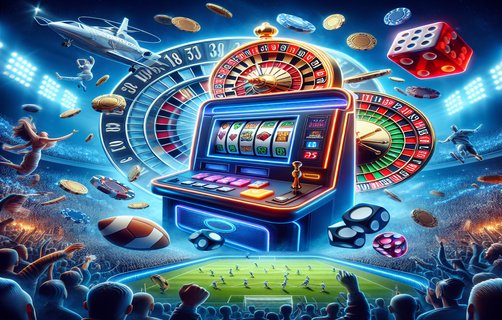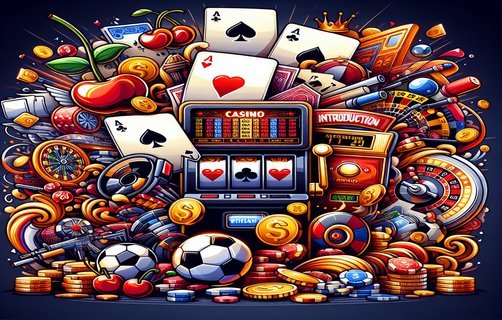Unraveling the Dynamics of Strategy: An In-Depth Analysis of Game Mechanics
खेल यांत्रिकी का विश्लेषण: रणनीति की गतिशीलता
In the ever-evolving world of tabletop games, a series of interconnected issues dictate the player experience and the strategy involved. Understanding these facets can be critical for game designers and players alike, particularly when looking to foster a more engaging game atmosphere. This analysis focuses on seven crucial components: luck factors, deck building, game figure set, point scale tracking, multilayered boards, hero dynamics, and game tiles.
Luck factors often play a significant role in gameplay, introducing an element of unpredictability that can either enhance or detract from the game experience. High levels of luck can sometimes overshadow strategy, frustrating players who favor skill-based outcomes. Balancing luck through careful game design—like providing players with opportunities to counter randomness—can improve the overall flow and engagement of the game.
Deck building is pivotal in determining how players interact with each other and the game environment. A well-designed deck allows for diverse strategies, encouraging players to adapt and evolve their gameplay. Designers should offer a range of cards that not only enhance individual strategies but also create synergies with others, enriching the gameplay experience.
The game figure set can significantly affect the visual and tactile enjoyment of a game. High-quality, aesthetically appealing figures can captivate players, while poorly designed figures can deter engagement. Moreover, the figures should embody the game’s theme and characters to invoke a sense of immersion within the gameplay.

Point scale tracking needs to be intuitive and visually engaging. Players should be able to understand their progress and the scores of others at a glance. Creative point tracking designs—such as using sliders or thematic tokens—can make scoring feel integrated into the game rather than a mere afterthought.
Multilayered boards offer a chance to deepen the strategy by presenting players with various terrains or environments to explore. Each layer can unlock new mechanics, fostering creativity in player decisions. This complexity can serve to enhance strategic depth but must be balanced so as not to overwhelm the players.
Hero dynamics introduce unique abilities and traits that can further engage players. Designing the heroes so that they have diverse skills without compromising the balance of the game is essential. Each hero should represent a distinct play style, encouraging players to experiment with different strategies.
Finally, the use of game tiles can create modular environments that enhance replayability. By allowing players to have a different experience each time they play, designers can keep the gameplay fresh and engaging. This dynamic aspect encourages players to explore and adapt their strategies continually.
In conclusion, a careful synthesis of these elements can drastically improve the overall gaming experience. Game designers should not only emphasize skill but also carefully incorporate these mechanical components to create a captivating and balanced game world.
टेबलटॉप खेलों की निरंतर विकसित होती दुनिया में, एक श्रृंखला परस्पर संबंधित मुद्दे खिलाड़ी के अनुभव और शामिल रणनीति को निर्धारित करते हैं। इन पहलुओं को समझना खेल डिजाइनरों और खिलाड़ियों दोनों के लिए महत्वपूर्ण हो सकता है, विशेष रूप से एक अधिक प्रेरक खेल माहौल को बढ़ावा देने के लिए। यह विश्लेषण सात महत्वपूर्ण घटकों पर केंद्रित है: किस्मत के कारक, डेक निर्माण, खेल आकृति सेट, अंक पैमाने का ट्रैकिंग, बहुस्तरीय बोर्ड, नायक गतिशीलता, और खेल टाइलें।
किस्मत के कारक अक्सर खेल के दौरान महत्वपूर्ण भूमिका निभाते हैं, जिसमें अप्रत्याशितता का एक तत्व होता है जो खेल अनुभव को बढ़ा या घटा सकता है। उच्च स्तर की किस्मत कभी-कभी रणनीति को ओवरशैड कर सकती है, उन खिलाड़ियों को निराश कर सकती है जो कौशल-आधारित परिणामों को पसंद करते हैं। सावधानीपूर्वक खेल डिजाइन के माध्यम से किस्मत का संतुलन बनाकर—जैसे कि खिलाड़ियों को अनियमितता को काउंटर करने के अवसर प्रदान करना—कुल मिलाकर खेल के प्रवाह और जुड़ाव में सुधार कर सकता है।
डेक निर्माण यह निर्धारित करने में महत्वपूर्ण होता है कि खिलाड़ी एक-दूसरे और खेल के वातावरण के साथ कैसे बातचीत करते हैं। एक सुव्यवस्थित डेक विविध रणनीतियों की अनुमति देता है, खिलाड़ियों को अपनी खेल शैली को अनुकूलित और विकसित करने के लिए प्रोत्साहित करता है। डिजाइनरों को ऐसे कार्डों की एक श्रृंखला प्रदान करनी चाहिए जो न केवल व्यक्तिगत रणनीतियों को बढ़ाएं बल्कि दूसरों के साथ सह-अनुप्रयोग भी निर्माण करें, जिससे गेमप्ले का अनुभव समृद्ध हो सके।
खेल आकृति सेट खेल के दृश्य और स्पर्शीय आनंद को महत्वपूर्ण रूप से प्रभावित कर सकता है। उच्च गुणवत्ता, दृश्यात्मक रूप से आकर्षक आकृतियाँ खिलाड़ियों को आकर्षित कर सकती हैं, जबकि खराब डिज़ाइन की आकृतियाँ व्यस्तता को हतोत्साहित कर सकती हैं। इसके अलावा, आकृतियों को खेल के विषय और पात्रों को व्यक्त करना चाहिए ताकि गेमप्ले के भीतर एक अन immersive अनुभव उत्पन्न हो सके।
अंक पैमाने का ट्रैकिंग सहज और दृश्यात्मक रूप से आकर्षक होना चाहिए। खिलाड़ियों को एक नज़र में अपनी प्रगति और दूसरों के स्कोर को समझने में सक्षम होना चाहिए। रचनात्मक अंक ट्रैकिंग डिज़ाइन—जैसे कि स्लाइडर्स या विषयगत टोकन का उपयोग करना—अंकन को खेल में एकीकृत महसूस करवा सकता है न कि केवल एक बाद की सोच।
बहुस्तरीय बोर्ड खिलाड़ियों को विभिन्न इलाकों या परिवेशों का पता लगाने का मौका देते हैं। प्रत्येक परत नई गतियों को अनलॉक कर सकती है, खिलाड़ियों के निर्णयों में रचनात्मकता को बढ़ावा देती है। यह जटिलता रणनीतिक गहराई को बढ़ाने के लिए काम कर सकती है लेकिन खिलाड़ियों को अभिभूत न करने के लिए संतुलित होनी चाहिए।

नायक गतिशीलता अद्वितीय क्षमताएँ और लक्षण पेश करती है जो खिलाड़ियों को और जोड़ती हैं। नायकों को इस तरह डिजाइन करना आवश्यक है कि उनके पास विविध कौशल हों बिना खेल के संतुलन को खतरे में डाले। प्रत्येक नायक को एक विशिष्ट खेल शैली का प्रतिनिधित्व करना चाहिए, खिलाड़ियों को विभिन्न रणनीतियों के साथ प्रयोग करने के लिए प्रोत्साहित करना चाहिए।
अंत में, खेल टाइलों का उपयोग मॉड्यूलर वातावरण बना सकता है जो पुन: खेलने की योग्यता को बढ़ाता है। खिलाड़ियों को यह संभव बनाकर कि वे हर बार खेलने पर अलग अनुभव प्राप्त करें, डिजाइनर खेल को ताजा और सम्मोहक रख सकते हैं। यह गतिशील पहलू खिलाड़ियों को निरंतर अन्वेषण और रणनीतियों के अनुकूलन के लिए प्रेरित करता है।
अंत में, इन तत्वों के एक सतर्क संलय की मदद से कुल मिलाकर गेमिंग अनुभव में सुधार कर सकता है। खेल डिजाइनरों को न केवल कौशल पर जोर देना चाहिए बल्कि इन यांत्रिक घटकों को सावधानीपूर्वक शामिल करना चाहिए ताकि एक आकर्षक और संतुलित खेल संसार का निर्माण किया जा सके।

comments
GameGuru91
This analysis covers a lot of important elements in game design. I really appreciate the details about deck building!
BoardGameFanatic
Great insights! Luck factors can definitely make or break a session. Balancing that with strategy is key.
TacticianThinker
I love the idea of multilayered boards. They can create such depth in gameplay!
PixelPioneer
Really interesting take on hero dynamics! It’s so essential to keep things balanced yet engaging.
StrategicSage
The section on point scale tracking gave me new ideas for my next game night. Thanks for sharing!
CreativeCortex
The aspects of game tiles for replayability are spot on. They're a game-changer for keeping players interested.